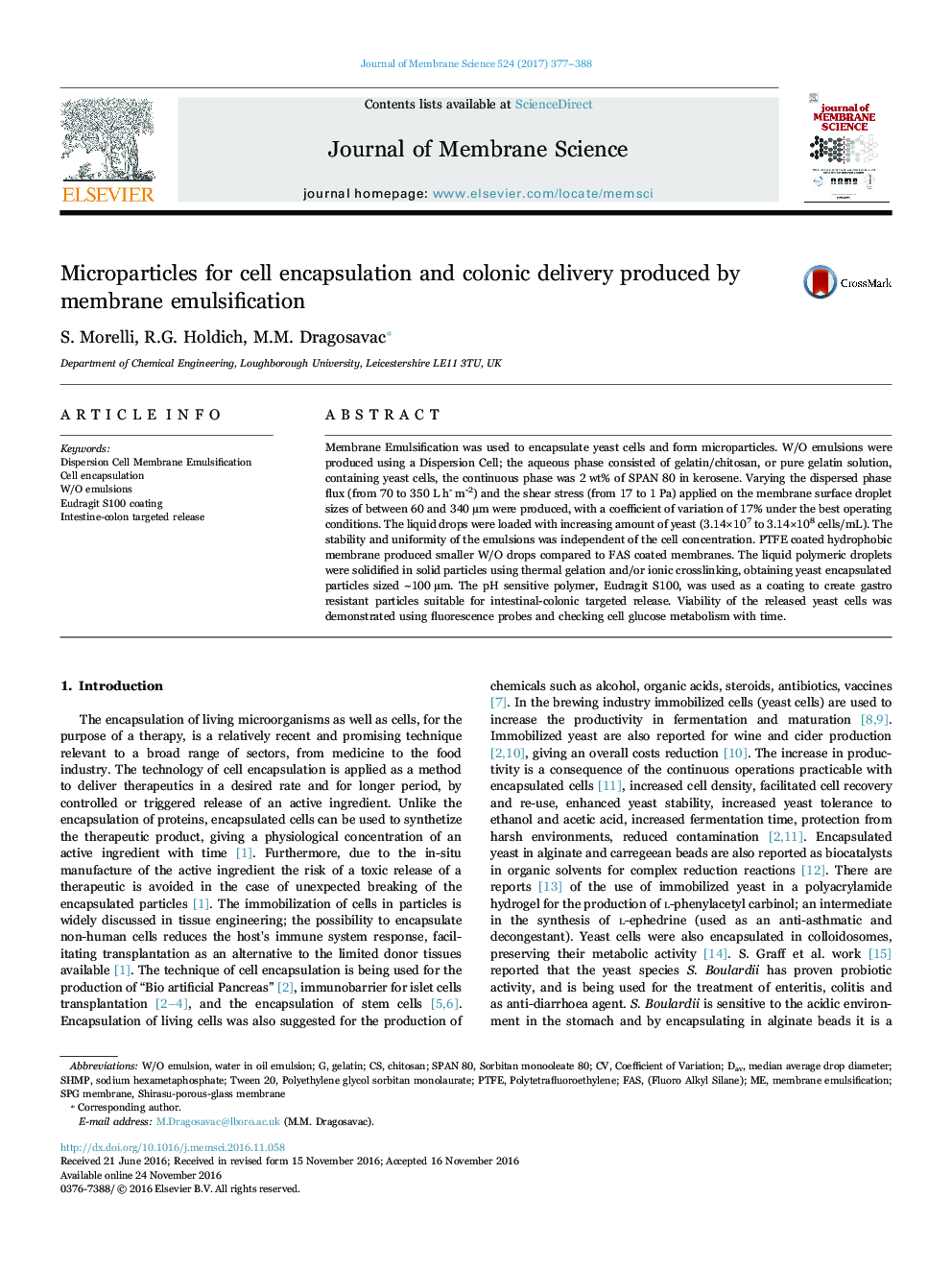| Article ID | Journal | Published Year | Pages | File Type |
|---|---|---|---|---|
| 4989227 | Journal of Membrane Science | 2017 | 12 Pages |
â¢W/O emulsion drops produced by membrane emulsification contained up to 3Ã108 cells/mL.â¢PTFE coated metal membrane, had high hydrophobicity and produced small drops.â¢Gelatin and gelatin/chitosan microparticles were used to encapsulate yeast cells.â¢Eudragit S100 coated particles provided targeted release in neutral/ basic conditions.â¢Glucose consumption with time and live/dead staining confirmed cell viability.
Membrane Emulsification was used to encapsulate yeast cells and form microparticles. W/O emulsions were produced using a Dispersion Cell; the aqueous phase consisted of gelatin/chitosan, or pure gelatin solution, containing yeast cells, the continuous phase was 2 wt% of SPAN 80 in kerosene. Varying the dispersed phase flux (from 70 to 350 L h- m-2) and the shear stress (from 17 to 1 Pa) applied on the membrane surface droplet sizes of between 60 and 340 µm were produced, with a coefficient of variation of 17% under the best operating conditions. The liquid drops were loaded with increasing amount of yeast (3.14Ã107 to 3.14Ã108 cells/mL). The stability and uniformity of the emulsions was independent of the cell concentration. PTFE coated hydrophobic membrane produced smaller W/O drops compared to FAS coated membranes. The liquid polymeric droplets were solidified in solid particles using thermal gelation and/or ionic crosslinking, obtaining yeast encapsulated particles sized ~100 µm. The pH sensitive polymer, Eudragit S100, was used as a coating to create gastro resistant particles suitable for intestinal-colonic targeted release. Viability of the released yeast cells was demonstrated using fluorescence probes and checking cell glucose metabolism with time.
Graphical abstractDownload high-res image (227KB)Download full-size image
